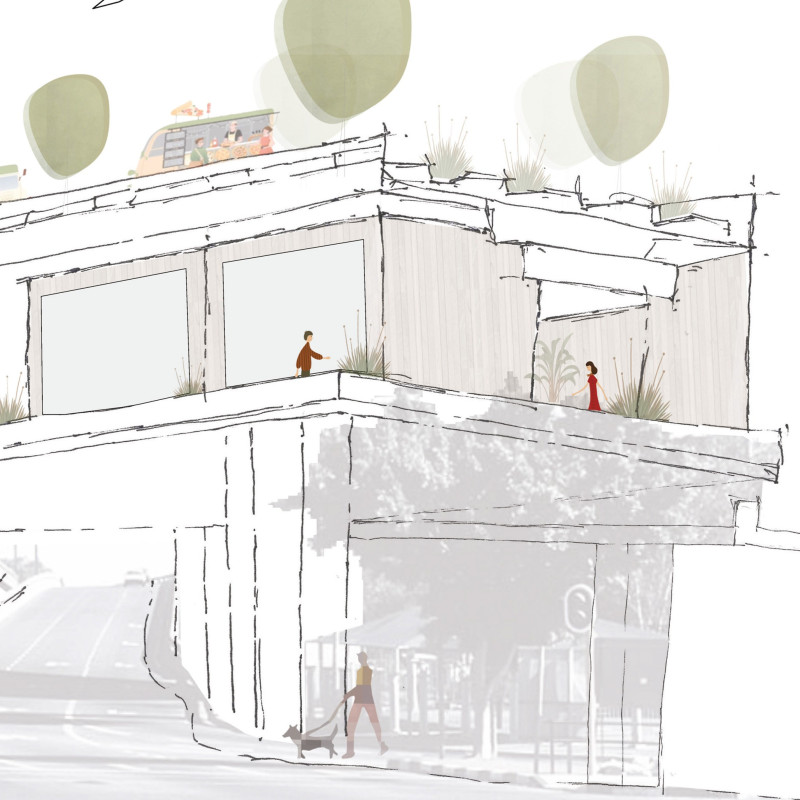5 key facts about this project
At the heart of the design lies its primary function, which can vary from residential to commercial or mixed-use. Regardless of its specific purpose, the architecture emphasizes openness and accessibility, with large glass facades that invite natural light and provide a visual connection to the surrounding environment. This design choice creates a welcoming atmosphere while also promoting energy efficiency through the use of passive solar heating and cooling strategies. The extensive glazing not only enhances the building's aesthetic appeal but also encourages a sense of transparency between the interior and exterior spaces.
The architectural composition is marked by a thoughtful juxtaposition of materials that define the project’s character. The use of locally sourced stone and wood lends a natural warmth to the structure, while contemporary metal cladding provides a modern contrast. This combination of textures not only enhances visual interest but also highlights the craft of the construction, showcasing the attention to detail that is evident throughout the design. Each material has been selected not only for its aesthetic qualities but also for its durability and sustainability, ensuring that the project will stand the test of time.
Key design elements include outdoor terraces and green roofs, which create communal spaces that promote social interaction among occupants. These areas are designed to be multifunctional, accommodating various activities from casual gatherings to community events. The inclusion of landscaping elements, such as native plants and trees, supports local biodiversity and enhances the ecological footprint of the project. This green approach reflects a growing trend in urban architecture that prioritizes environmental considerations and community engagement.
The layout of the internal spaces is equally significant, with an emphasis on flexibility and adaptability. Open floor plans facilitate various uses, allowing occupants to customize their environment according to their needs. The circulation within the building is carefully planned to ensure ease of movement while maintaining a sense of intimacy in common areas. This thoughtful design approach reflects an understanding of the diverse needs of contemporary users and highlights the importance of creating spaces that support a range of activities.
One of the unique aspects of this project is its engagement with the surrounding community. The design incorporates elements that reflect the local culture and history, creating a dialogue between the architecture and its context. This might include art installations by local artists or features that pay homage to the area's architectural heritage. Such considerations enrich the experience of the building, fostering a connection between the users and their environment.
The project exemplifies a commitment to advancing architectural ideas that respond to today’s challenges. It does not merely seek to occupy space but aims to enhance the quality of life for its users and the wider community. By prioritizing sustainability, community interaction, and adaptability, the design reflects a progressive mindset that is essential for modern architecture.
For those interested in exploring this project in greater detail, further investigation of architectural plans, sections, and designs will provide additional insights into the innovative approaches and thoughtful considerations that underpin this architectural endeavor. The project's multifaceted nature invites curiosity and engagement, encouraging a deeper appreciation for the interplay between architecture and the environment in which it exists.


 Maximilian Carl Nicolas Seipp,
Maximilian Carl Nicolas Seipp, 




















